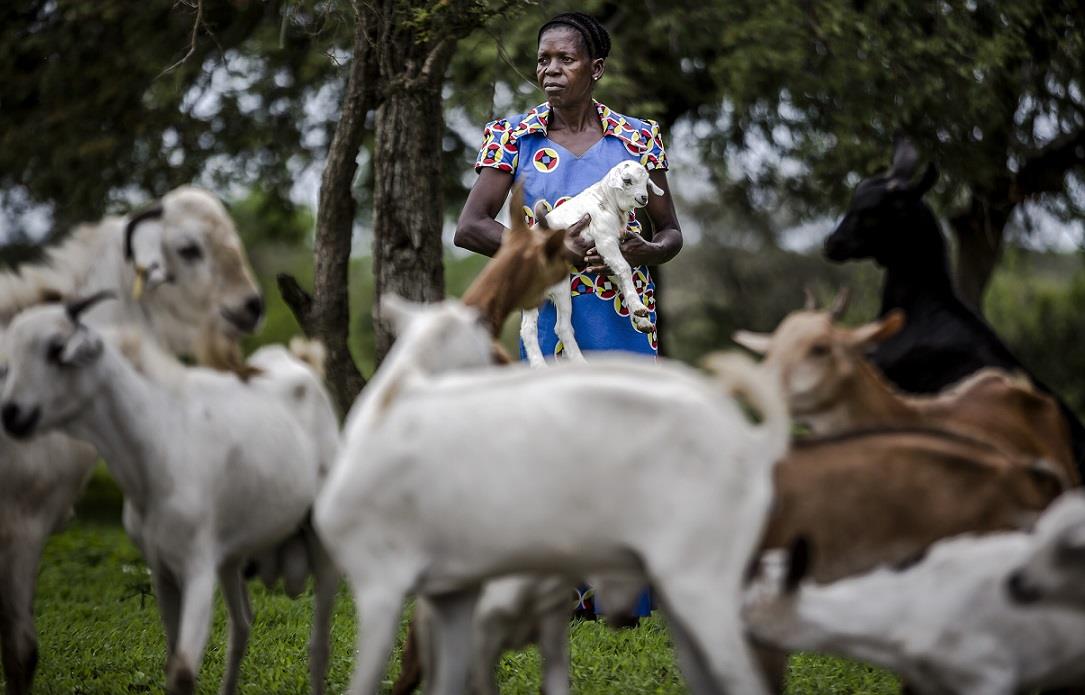“Low-carbon livestock” can help tackle climate change and boost food security

Rome/Madrid – The Food and Agriculture Organization of the United Nations (FAO) has published a new report that lays out five practical actions for establishing “low-carbon livestock” and calls on countries to invest in innovations that lower livestock greenhouse gas emissions and ensure future food security.
Livestock systems emit nearly 15 percent of global greenhouse gas emissions, and if action is not taken, these emissions will only continue to rise as the demand for animal products grows.
“Livestock are often viewed as a ‘problem’ in the context of climate change, but low-carbon livestock can actually be an essential part of the global solution,” said FAO Assistant Director-General Bukar Tijani.
“Low-carbon livestock can help countries achieve a balance by providing meat, milk, eggs and other food products in a way that actually lowers greenhouse gas emissions in the sector” he added.
The report comes at a key moment, following the recent publication of a special report by the Intergovernmental Panel on Climate Change (IPCC) that flags the importance of action in the livestock sector.
With countries expected to propose their next round of Nationally Determined Contributions in early 2020, there is an urgent need to raise ambitions by strengthening the focus on livestock, and building capacity for the ‘measurement, reporting and verification’ of livestock emissions to track and demonstrate progress over time.
The FIVE actions
Action 1. Boosting production efficiency
The guidance recognizes gains in global livestock production efficiency and points to opportunities for further improvements in reducing emissions relative to consumption.
Action 2. Intensifying recycling
FAO calls for intensified recycling efforts to make better use of organic waste by redirecting it to animal feed and renewable energy production.
Action 3. Offsetting emissions through nature-based solutions
Available nature-based solutions include halting deforestation for livestock, restoring degraded lands, and regenerative grazing practices. These are priorities for slowing carbon losses and putting carbon back in the ground. Farms can also be made multi-purpose for renewable energy production to help offset agricultural greenhouse gas emissions.
Action 4. Striving for healthy, sustainable diets
Consumer demand for animal foods also plays a role. Healthy diets that match protein requirements can help limit rising livestock emissions and at the same time address malnutrition and overconsumption. Biotechnological innovations for alternative proteins for farm animals and people could also present consumers with low environmental impact food choices.
Action 5. Developing climate-smart policies to drive change
Making progress towards low-carbon livestock will depend on strong policies creating the right incentives, regulations, investments, and market responses.
This new guide calls for integrative approaches as part of an ongoing process of continuous improvement towards sustainable livestock agrifood systems.
“We appreciate the integrated and urgent actions proposed both to lower livestock carbon emissions and to make greater use of livestock to meet the Sustainable Development Goals,” said Dr Jimmy Smith, Director General of the International Livestock Research Institute (ILRI), “Research by ILRI, FAO and our many partners confirms that livestock systems are essential to the wellbeing of both people and the planet.”
Contact: [email protected]
Related Links:
- FAO Five practical actions towards low-carbon livestock. http://www.fao.org/documents/card/en/c/ca7089en
- FAO and the Koronivia Joint Work on Agriculture. http://www.fao.org/climate-change/our-work/what-we-do/koronivia
- FAO Livestock Environmental Assessment and Performance Partnership (LEAP). http://www.fao.org/partnerships/leap
- Global Agenda for Sustainable Livestock. http://www.livestockdialogue.org
- FAO Global Livestock Environmental Assessment Model (GLEAM). www.fao.org/Gleam
- FAO Ex-Ante Carbon balance Tool (EX-ACT). http://www.fao.org/tc/exact/ex-act-home
- FAO. 2019. Climate change and the global dairy cattle sector – the role of the dairy sector in a low-carbon future. http://www.fao.org/3/CA2929EN/ca2929en.pdf
- FAO. 2019. The State of Food and Agriculture – Moving forward on food loss and waste reduction. http://www.fao.org/3/ca6030en/ca6030en.pdf).
- FAO. 2018. The future of food and agriculture, alternative pathways to 2050. http://www.fao.org/3/I8429EN/i8429en.pdf
- FAO. 2018. Shaping the future of livestock – sustainably, responsibly, efficiently. The 10th Global Forum for Food and Agriculture (GFFA). http://www.fao.org/3/i8384en/I8384EN.pdf
